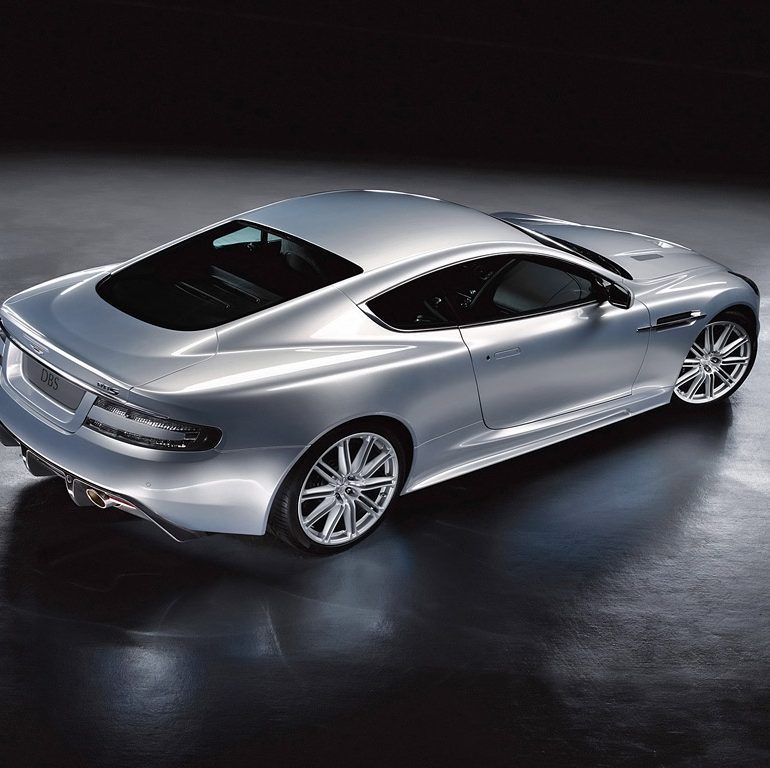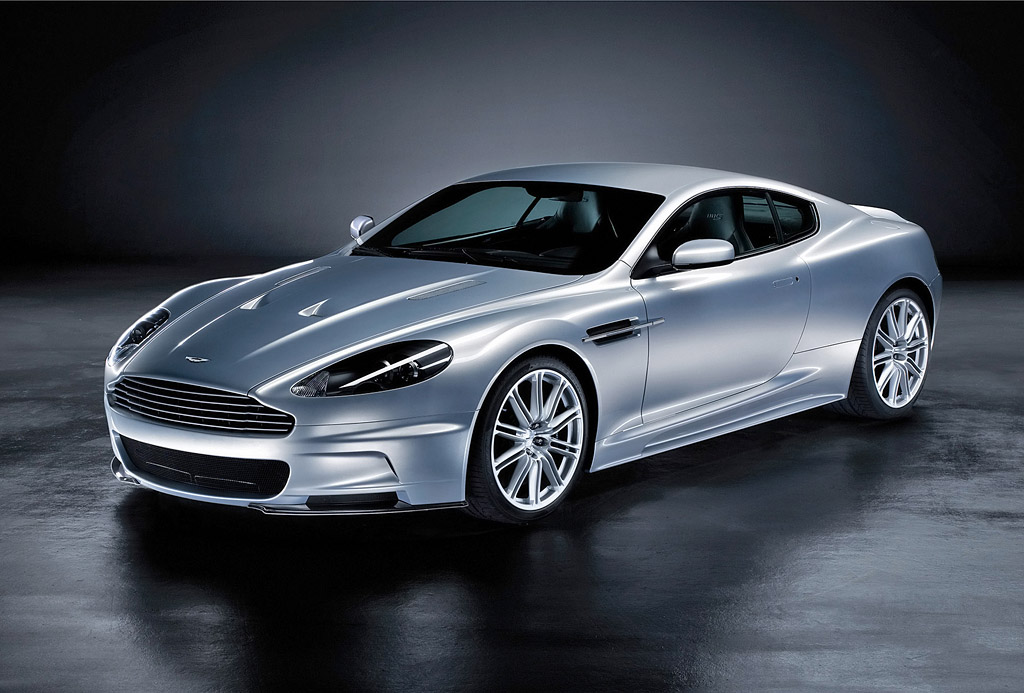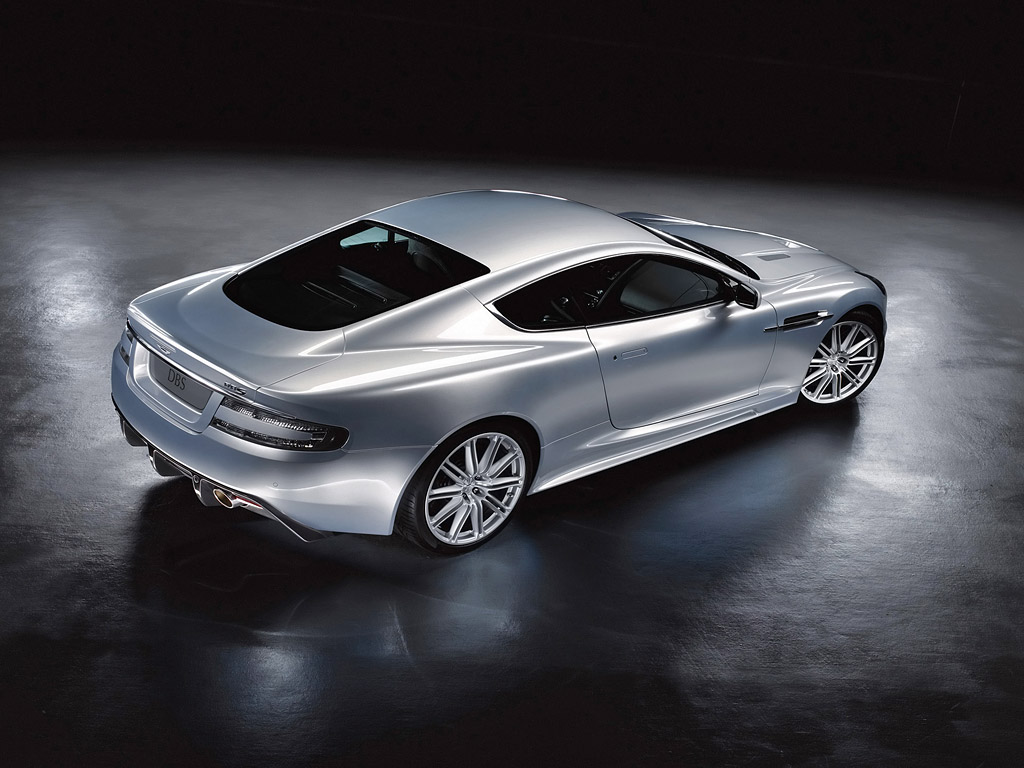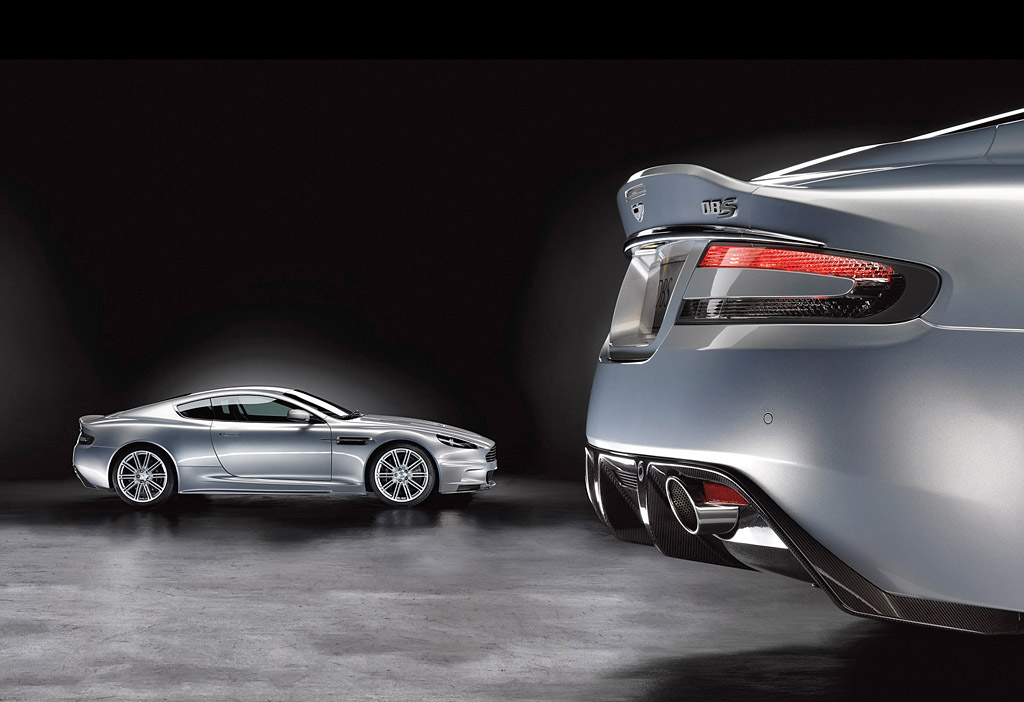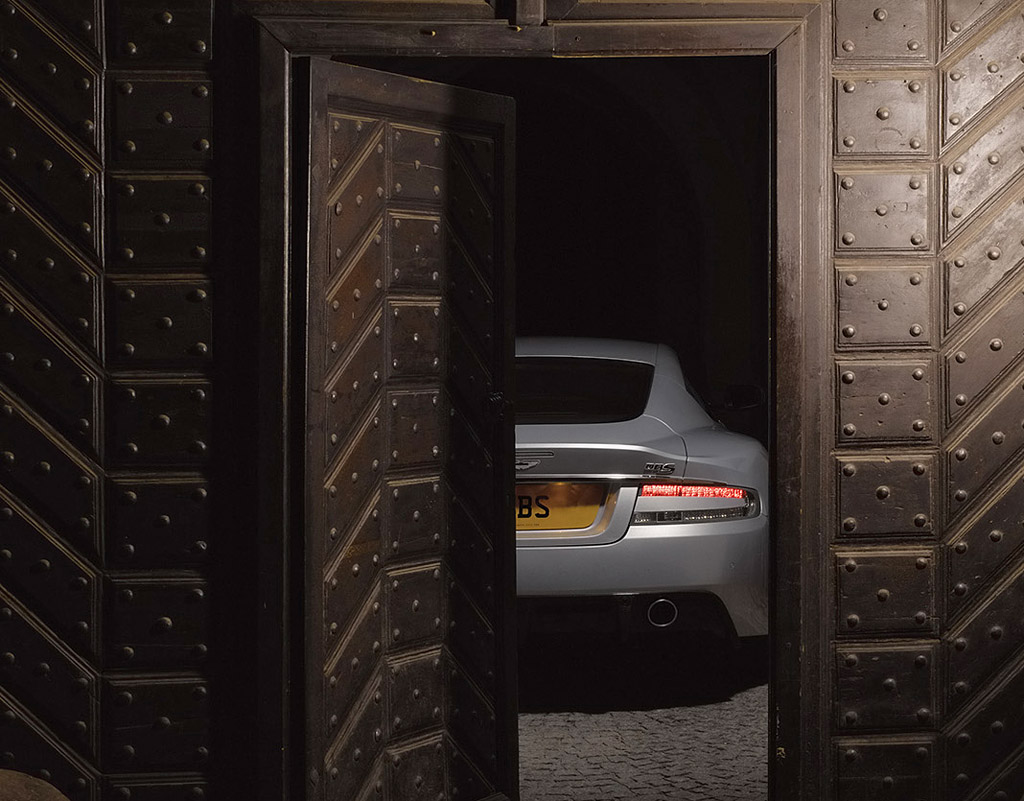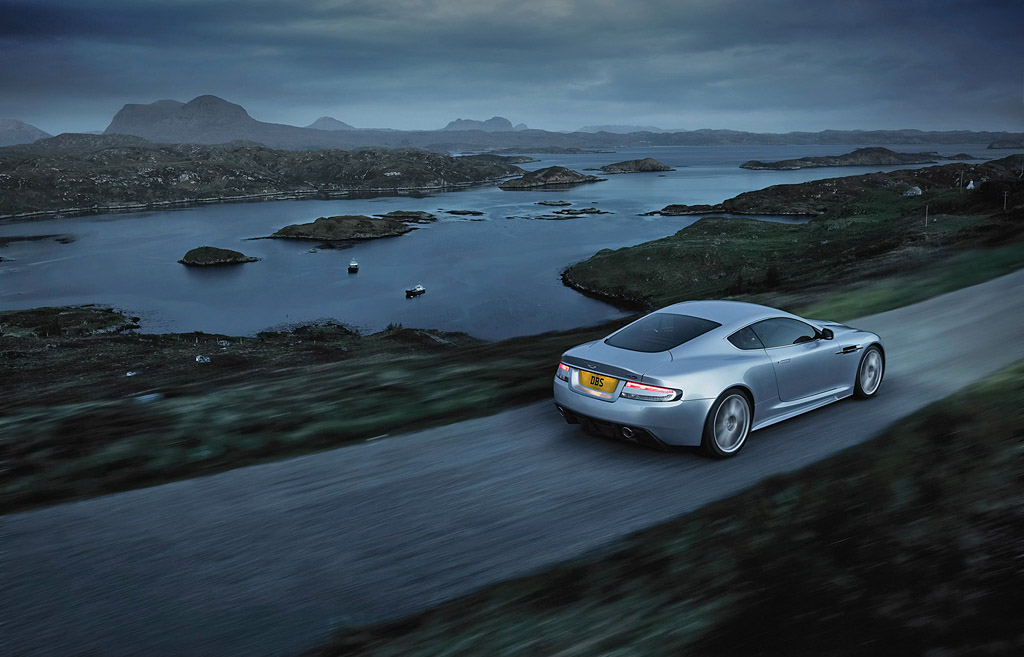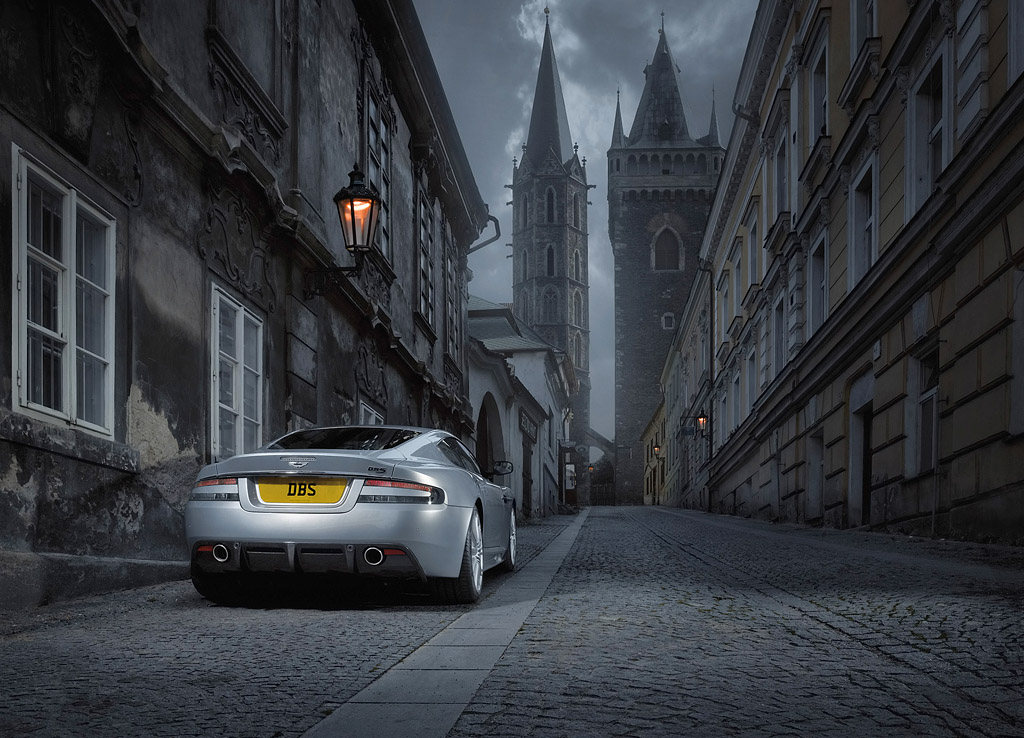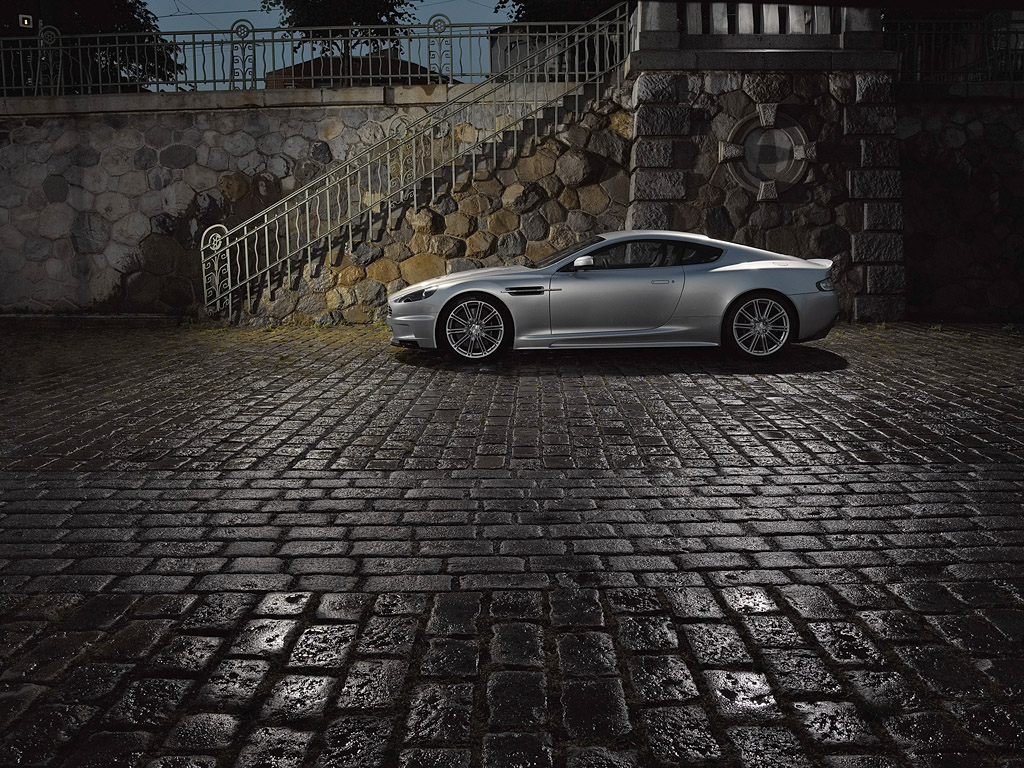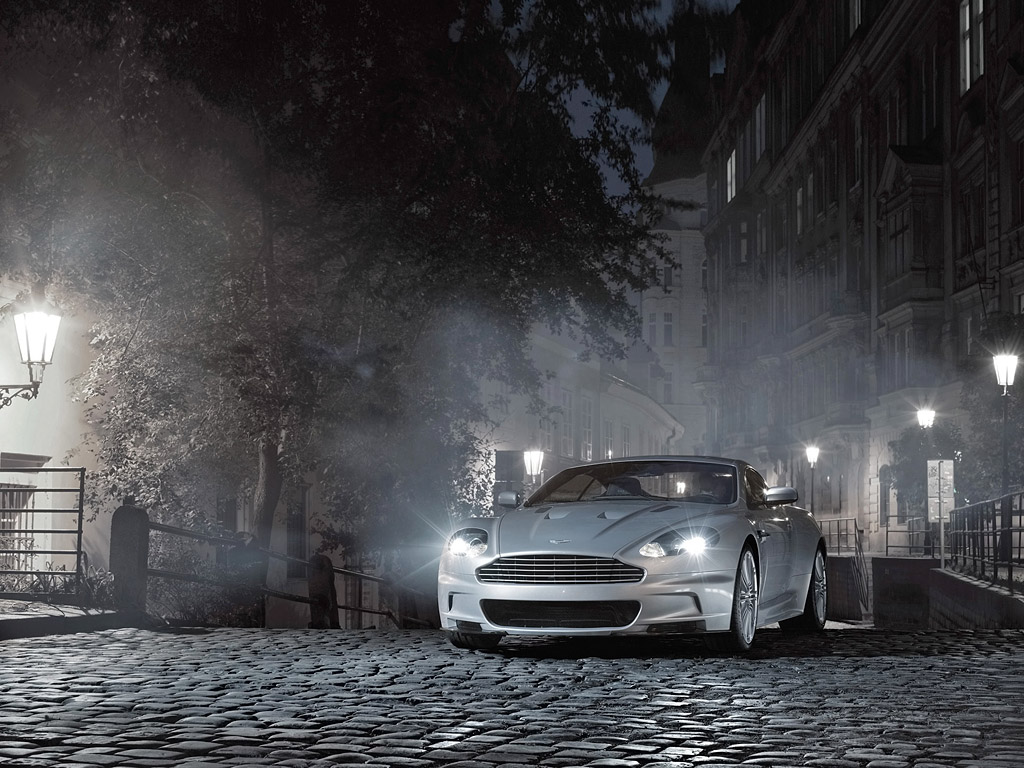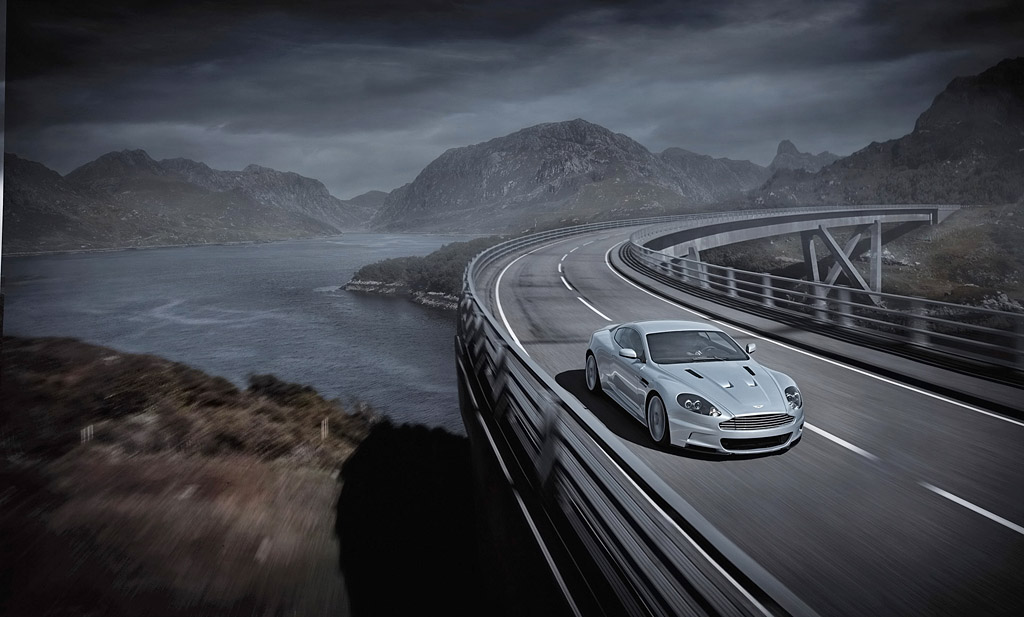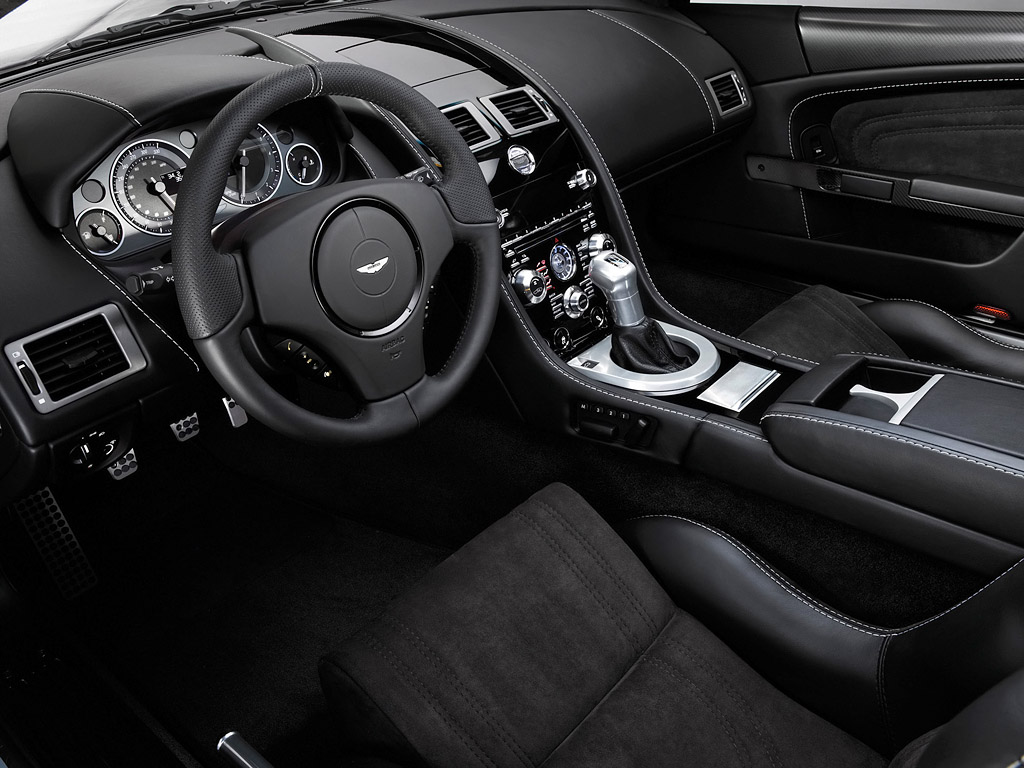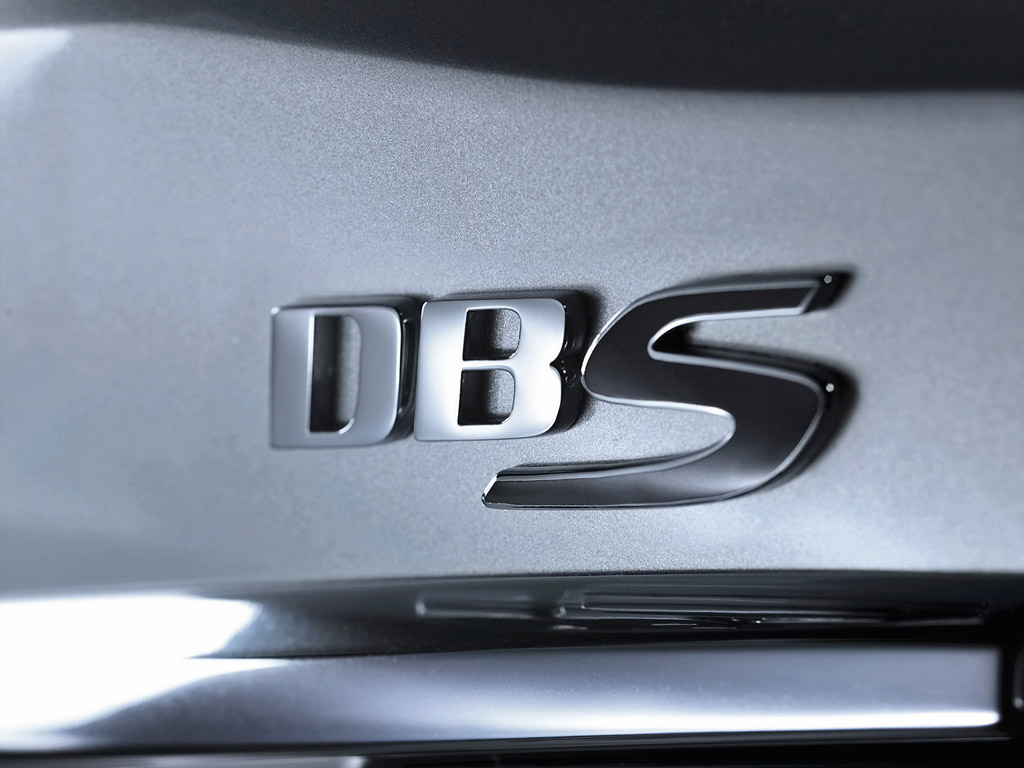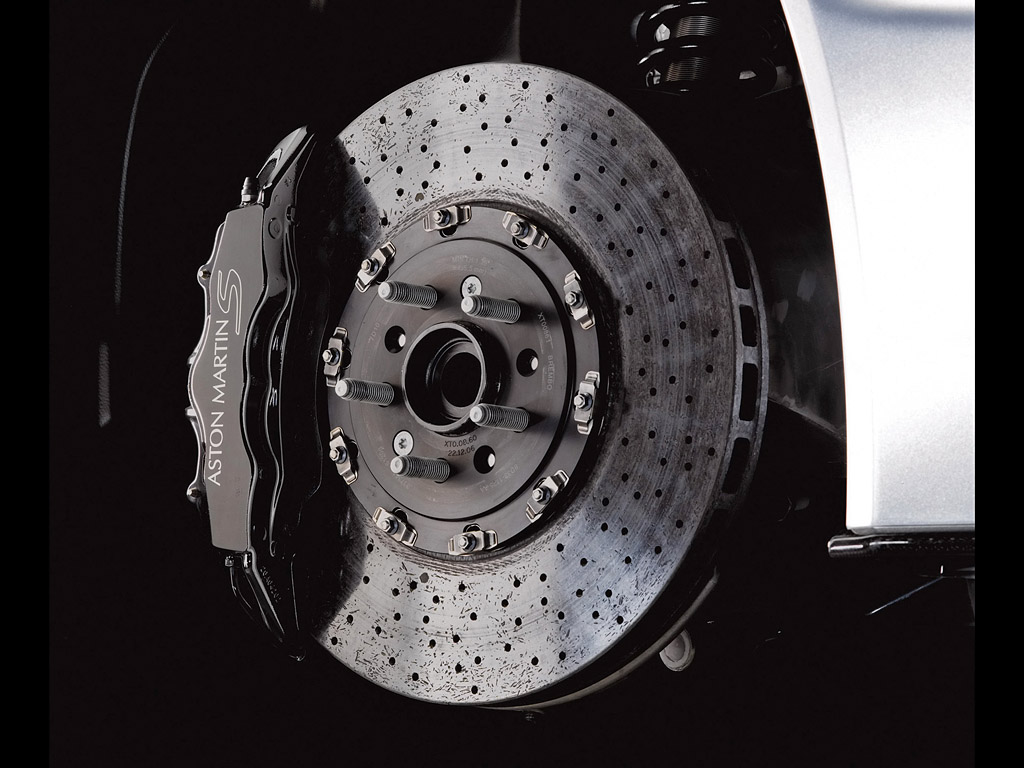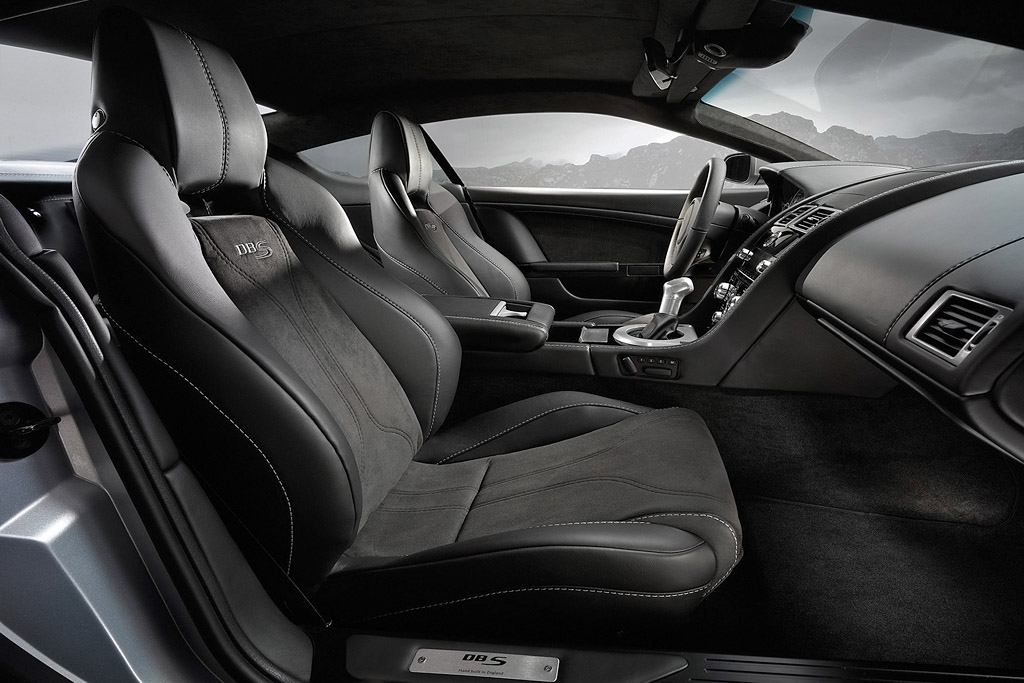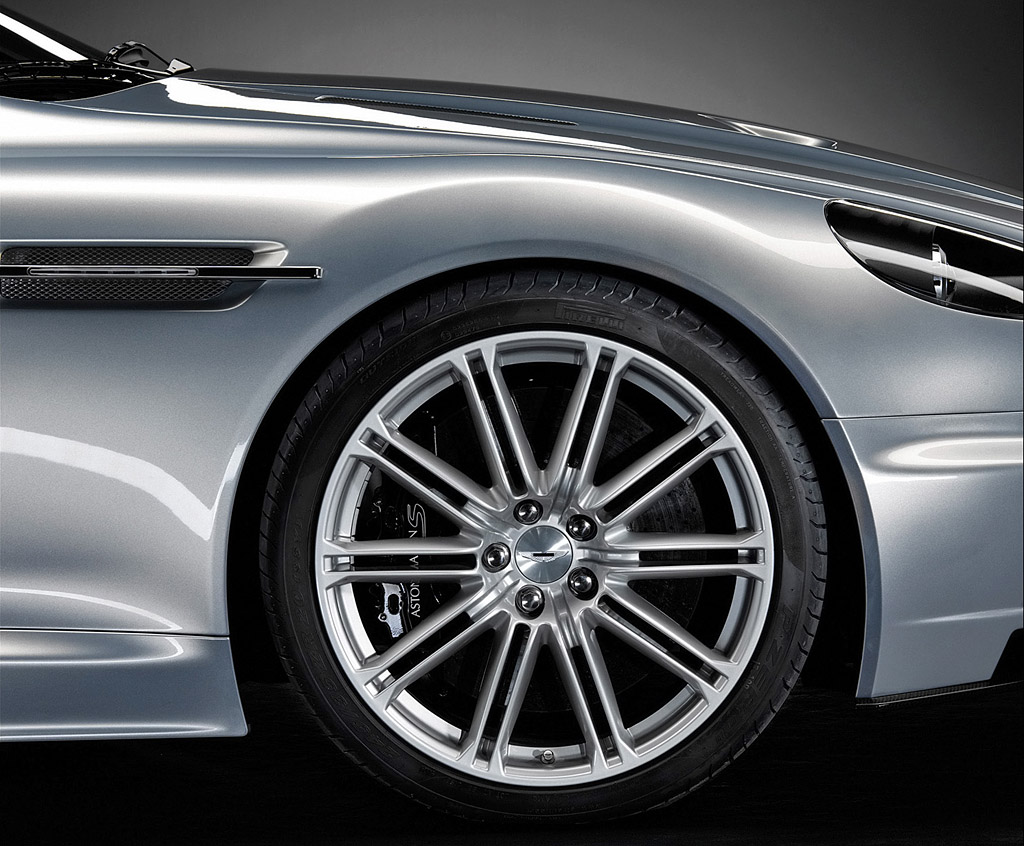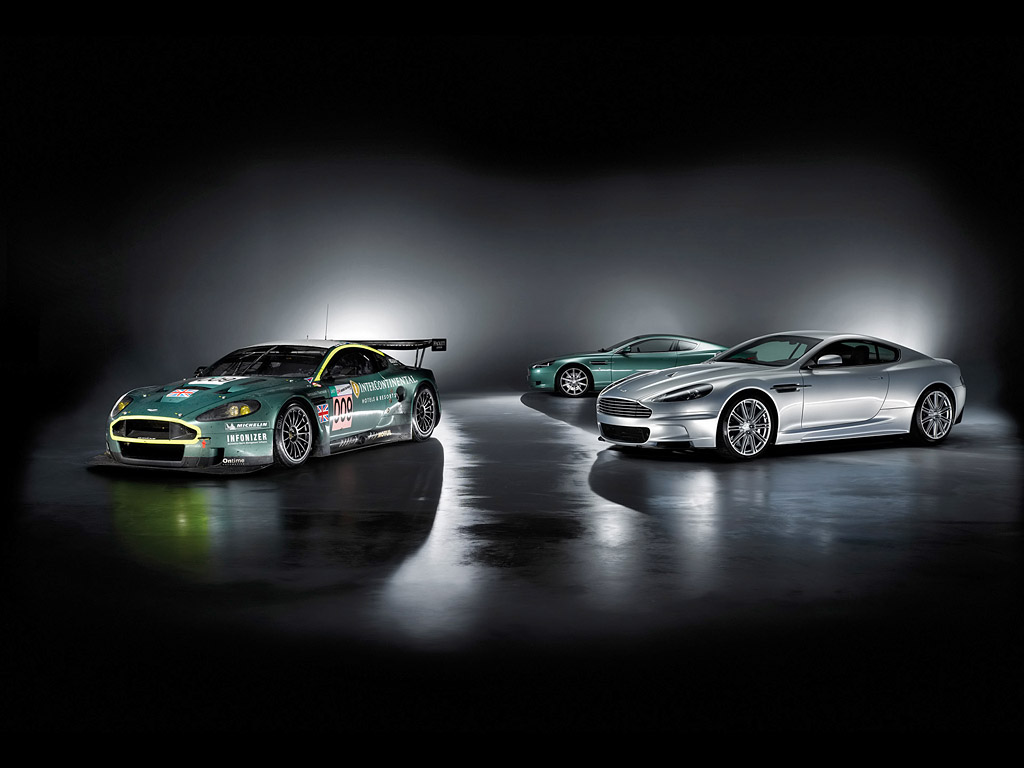2008 Aston Martin DBS
G17/08/2007 – Aston Martin will unveil the most eagerly anticipated car of the year when the new DBS is revealed at the Pebble Beach Concours dElegance on August 16th, where the company takes a starring role as the featured marque. It will replace the V12 Vanquish as Aston’s top model.
Aston Martin Chief Executive Officer, Dr Ulrich Bez, said: ”The DBS is the ultimate expression of Aston Martins engineering and technical ability. It offers pure performance without compromise.”
Equally at home on a twisting mountain circuit as on the open road, the DBS is a true thoroughbred. The Aston Martin DBS is a 6.0-litre V12 powered, race-bred, two-seater shaped by the aerodynamic demands of high performance, with an exquisite interior that marries beautifully hand-finished materials with the very latest in performance technology.
Performance
A combination of elegant design, innovative manufacturing processes, race-derived materials and components and Aston Martin’s unrivalled hand-build expertise makes the DBS a luxury sports car without equal. Every line, crease and curve conveys the enormous potential of the DBS, a seductive blend of refinement and raw power, provided by the hand-built V12 producing 510bhp (380kW), a top speed of 191mph (302km/h) and a 0-62mph time of 4.3 seconds.
The need for high-performance stability, handling ability and low kerb weight defined the DBS’s form and construction. Accordingly, the DBS becomes the first production Aston Martin to make extensive use of ultra-light carbon-fibre body panels. Carbon-fibre panels are used for the boot enclosure, boot lid, door opening surrounds, front wings and bonnet, giving a saving of some 30kg over more conventional materials without any reduction in strength.
High levels of performance and control are delivered by the combination of inherent light weight, and a supremely powerful and flexible V12 engine. At the heart of the DBS is a 6.0-litre V12 engine. The DBR9 and DBRS9 race cars are powered by an enhanced version of this same V12, tuned to produce in excess of 600bhp. The shared powerplant continues the strong link between Aston Martin’s road and race cars, just as the six-cylinder engine used in the DBR1 also powered the DB4, DB5 and DB6 in the 1950s and 60s.
As with all current Aston Martins, the engine is hand-assembled at Aston Martin’s dedicated engine facility in Cologne, Germany. The classic 6.0-litre V12 features a number of power-increasing enhancements. These include a ‘by-pass’ engine air intake port that opens above 5500rpm to allow more air into the engine, and re-profiled air inlet ports that further improve airflow into the combustion chamber.
Design
The DBS’s aerodynamic enhancements are shaped by Aston Martin’s racing experience. A carbon-fibre splitter and a new front bumper design help channel airflow around the cars wider bodywork. The aerodynamics team worked hand in hand with the modelling team to ensure that the forms and surfaces of DBS were sculpted for inherent stability at high speeds.
The widened front and rear track improve handling and give the car a more muscular character. To accommodate this additional width, the surfaces of the wings have been sculpted and re-shaped with harder lines, which also serve to emphasise the cars strength and power. The lowered ride height is accentuated by the enhanced side sills, carefully profiled to improve aerodynamic performance and reduce drag along the flanks. The iconic Aston Martin side strake, a design feature of every DB car since the DB4, has been redesigned for the DBS, incorporating a side repeater formed by a bank of LEDs.
Improved aerodynamics shape the rear of the DBS, where the more prominent boot spoiler is carefully incorporated into the carbon-fibre boot lid. A horizontal chrome finisher is set into the lid to accentuate the wide track of the new car. The car’s flat undertray helps to improve the aerodynamics of the underbody surface and culminates in a new carbon-fibre rear diffuser, another feature carried over from the race cars. This device creates an area of low pressure beneath the rear of the car, reducing lift and improving high-speed stability without the need for large, unsightly external spoilers. The new one-piece diffuser also incorporates the DBSs large and distinctive twin exhaust tailpipes.
Improved aerodynamics shape the rear of the DBS, where the more prominent boot spoiler is carefully incorporated into the carbon-fibre boot lid. A horizontal chrome finisher is set into the lid to accentuate the wide track of the new car. The car’s flat undertray helps to improve the aerodynamics of the underbody surface and culminates in a new carbon-fibre rear diffuser, another feature carried over from the race cars. This device creates an area of low pressure beneath the rear of the car, reducing lift and improving high-speed stability without the need for large, unsightly external spoilers. The new one-piece diffuser also incorporates the DBSs large and distinctive twin exhaust tailpipes.
As an option the DBS may be equipped with specially developed lightweight seats (outside North America). These feature a carbon-fibre and Kevlar composite structure that provides crucial weight saving by allowing the structure of the seat to be incredibly slim: between 2.5mm and 3mm. Overall, the trimmed seat provides a weight saving of 20kg. The lightweight seats are a fixed structure, but can be adjusted for rake as well as sliding fore and aft.
Control
As with the DB9 and DBR race cars, the Aston Martin DBS benefits from the inherent characteristics of the VH architecture. The VH underframe consists of pressed, extruded and cast aluminium components, bonded together to create an immensely strong underlying structure. This structure means that weight is kept to a minimum, with the front-mid mounted engine and rear-mid mounted transaxle ensuring a near perfect weight distribution: 85% of the cars weight is positioned within its wheelbase.
To take full advantage of its extremely precise and rigid platform, the DBS employs a new and sophisticated Adaptive Damping System (ADS) which uses two separate valves to set the dampers to five different positions, allowing instant adjustment of the car’s ride and handling characteristics. The ADS automatically alters the suspension settings to ensure the driver has high levels of control at all times, with the ability to respond instantly to different driving conditions. The dampers can be softer, with a corresponding improvement in ride quality, or firm, providing improved body control for more spirited driving.
The car’s braking system features another innovation, the first time Carbon Ceramic Matrix (CCM) brakes have been used on a road-going Aston Martin. The end result is shorter stopping distances with excellent resistance to fade in even the most demanding driving conditions. CCM brakes are also some 12.5kg lighter than a conventional system, reducing the weight of the car overall and, in particular, the unsprung weight and rotational masses, further enhancing the performance of the suspension.
Deliveries of the DBS are expected to commence during quarter one 2008, with prices to be confirmed at the Frankfurt Motor Show in September.
In Detail
| submitted by | Richard Owen |
| type | Series Production Car |
| released at | 2007 Pebble Beach Concours |
| built at | Gaydon, Warwickshire, England |
| price $ | $ 265,000 |
| price £/td> | £168,000 |
| engine | Alloy V12 |
| position | Front Longitudinal |
| aspiration | Natural |
| block material | Aluminum |
| valvetrain | Chain Driven DOHC, 4 Valves per Cyl |
| fuel feed | Electronic Fuel Injection |
| displacement | 5935 cc / 362.2 in³ |
| bore | 89 mm / 3.5 in |
| stroke | 79.5 mm / 3.1 in |
| compression | 10.9:1 |
| power | 380.3 kw / 510 bhp @ 6500 rpm |
| specific output | 85.93 bhp per litre |
| bhp/weight | 320.96 bhp per tonne |
| torque | 569.44 nm / 420 ft lbs @ 5750 rpm |
| redline | 6800 |
| body / frame | Aluminium, Magnesium Alloy & Carbon-fibre composite body over Aluminum VH Structure |
| driven wheels | RWD w/LSD, DSC |
| wheel type | Cast Alloy Wheels w/Graphite Finish |
| front tires | 245/35-20 Pirelli P Zero |
| rear tires | 295/30-20 Pirelli P Zero |
| front brakes | Vented Carbon Ceramic Discs w/6-Piston Calipers, ABS, EBD |
| rear brakes | Vented Carbon Ceramic Discs w/4-Piston Calipers, ABS, EBD |
| front wheels | F 50.8 x 21.6 cm / 20 x 8.5 in |
| rear wheels | R 50.8 x 27.9 cm / 20 x 11 in |
| steering | Rack & Pinion w/Servotronic Speed-Sensitive Power Assist |
| f suspension | Double Wishbones w/Coil Springs, Anti-Roll Bar, Active Dampers |
| r suspension | Double Wishbones w/Coil Springs, Anti-Roll Bar, Active Dampers |
| curb weight | 1589 kg / 3500 lbs |
| weight distro | 43 % / 57 % |
| wheelbase | 2741 mm / 107.9 in |
| front track | 1585.0 mm / 62.4 in |
| rear track | 1582.4 mm / 62.3 in |
| length | 4721 mm / 185.9 in |
| width | 1905 mm / 75.0 in |
| height | 1280 mm / 50.4 in |
| transmission | 6-Speed Transaxle |
| gear ratios | 3.15:1, 1.95:1, 1.44:1, 1.15:1, 0.94:1, 0.76:1 |
| final drive | 3.71:1 |
| top speed | ~307.4 kph / 191 mph |
| 0 – 60 mph | ~4.3 seconds |
| 0 – 100 mph | ~9.2 seconds |
| 0 – 1/4 mile | ~12.5 seconds |
| city fuel econ epa | 21 L/100 km or 11 mpg-us |
| hwy fuel econ epa | 14 L/100 km or 17 mpg-us |
| fuel capacity | 77.59 litres or 20.5 gal. |


